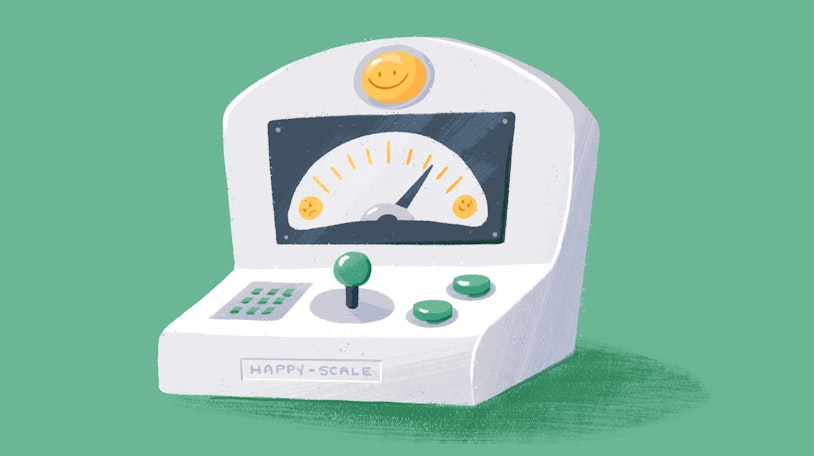In 2024, business is more than just a transactional relationship — it's about creating meaningful connections that foster loyalty and encourage repeat business. By tracking specific customer engagement metrics, you can gain invaluable insights into what's working, what isn't, and how to pivot your strategies for better results.
In this guide, we're going to discuss the key customer engagement KPIs that should be on every business leader's radar in 2024. From understanding the basics like customer satisfaction score (CSAT) to unraveling the complexities of a customer engagement score, we'll cover a range of metrics that will equip you with the knowledge to measure, analyze, and enhance your customer engagement initiatives. We'll also touch on the significance of each metric and offer guidance on how to leverage customer engagement software to streamline your tracking efforts.
Our goal is to provide you with a clear roadmap to navigating the critical customer engagement metrics, ensuring that you're not just collecting data but using it to foster deeper connections with your customers and drive your business forward.
Understanding customer engagement metrics
Customer engagement metrics are data points that quantify the interaction between your business and its customers. They can provide insight into how customers interact with your brand, product, or service and reveal nuances about consumer behavior and preferences. These metrics can show you where and how customers are choosing to engage so you can build effective customer engagement strategies.
Consistent and meaningful customer engagement fosters brand loyalty, encourages repeat business, and can ultimately contribute to your bottom line. When you track customer engagement metrics, you’ll gain practical insights to help shape your business's marketing, product design, customer service, and more.
Of course, it's important to differentiate customer engagement metrics from other performance indicators. While common metrics like sales figures or traffic data offer a snapshot of business performance, they don't necessarily provide insight into how deeply or effectively customers are relating and engaging with a brand.
Customer engagement metrics, on the other hand, dig into the quality of the customer-business relationship, revealing how customers interact with your brand beyond just making a purchase or visiting a website. These metrics can help you understand the customer journey more thoroughly, offering insights that enable you to improve customer experience and cultivate deeper relationships with your audience.
Benefits of measuring customer engagement metrics
There are several compelling reasons why keeping an eye on customer engagement metrics can be a game changer for your business. It’s about making informed decisions that foster satisfaction, loyalty, and — ultimately — growth. Let’s take a closer look at why they deserve a spot on your dashboard.
Boosting customer satisfaction
Customer engagement metrics can lead to a veritable gold mine of improvements in customer satisfaction. Think of it this way: By understanding how and where your customers engage most, you can tailor your services or products to meet their needs even better. It’s like having the inside scoop on what makes them tick, allowing you to deliver exactly what they're looking for, sometimes before they even know they want it.
Driving business growth and retention
Customers who engage more with your brand aren’t just browsing; they're forging a connection that translates into loyalty and repeat business. The beauty of tracking engagement metrics is seeing the direct impact on your retention rates and your bottom line. Regular customers are the backbone of steady revenue streams, and these metrics can show you how to keep them coming back for more.
Refining your strategy
Ever feel like you're throwing darts while blindfolded when planning your next move? Well, customer engagement metrics can be the light in the strategic darkness. They offer clear feedback on what’s working and what’s not, allowing you to pivot or adjust your strategies with confidence. Whether it’s tweaking a marketing campaign or enhancing customer service protocols, these insights help ensure your efforts hit the mark every time.
Predicting future trends
Getting ahead in business is about anticipation, not just reaction. By analyzing trends in customer engagement, you can identify emerging patterns and preferences, staying one step ahead in meeting customer expectations. This foresight can be crucial in securing your brand's position as a market leader.
Personalizing customer experience
In a world where customers are met with generic messages at every turn, personal touches can make all the difference. Through understanding engagement metrics, you can fine-tune your approach to offer more personalized experiences, showing your customers that you see them as individuals. This not only enhances their experience but also strengthens their bond with your brand.
Key customer engagement metrics to track in 2024
The world of business is ever-evolving, and staying ahead of the game means keeping up with the metrics that matter. Here's the lowdown on customer engagement metrics examples your business should be tracking in 2024, and for even more ways to track your success, check out our pieces on ecommerce metrics and KPIs and customer success metrics.
1. Customer satisfaction score (CSAT)
In business, happiness matters. That's where the customer satisfaction score (CSAT) comes in. CSAT measures how pleased customers are with a particular product or service. The higher the CSAT, the happier the customer. In the race against competition, keeping your customers happy is more crucial than ever. This metric is typically collected via post-interaction surveys that focus on customer fulfillment.
Calculating CSAT is pretty straightforward. After you've asked your customers how satisfied they are on a scale (typically 1–5, 1–10, or a simple thumbs up or thumbs down), the formula looks like this:
CSAT = (number of satisfied customers / total number of responses) * 100
2. Net Promoter Score (NPS)
Net Promoter Score (NPS) provides insights into customer loyalty by asking one simple question: On a scale of 0 to 10, how likely are you to recommend our product or service to others? But it's not just about asking the question, it's about asking it at the right time. Using tools like Help Scout's microsurveys feature, you can glean insights collected at strategic moments.
The formula it follows is:
NPS = % of promoters - % of detractors
To calculate NPS, you’ll need to first calculate the percentages of promoters, detractors, and passives. Here’s how to determine where to put each response:
Promoters: Those who answer 9–10, signaling they're likely to promote your brand
% of Promoters = (total responses - (detractors + passives) / total responses) * 100
Detractors: Those who respond with 0–6
% of detractors = (total responses - (promoters + passives) / total responses) * 100
Passives: People who respond with a 7 or 8 tend to be indifferent
% of passives = (total responses - (promoters + detractors) / total responses) * 100
3. Customer engagement score
This metric encompasses various interaction types, including page views, shares, likes, and time spent on your platform. The goal is to understand the depth and breadth of a customer's relationship with your brand. This engagement data is typically collected via CRM software.
To calculate customer engagement score, you’d assign weighted values to different types of engagement, then add them all together:
Customer engagement score = (engagement activity 1 * weighted value) + (engagement activity 2 * weighted value) + (engagement activity 3 * weighted value) + etc.
4. Average resolution time
Swift and effective problem-solving is a key element of customer satisfaction. The average resolution time tracks how quickly your company resolves customer issues. A shorter resolution time can lead to a smoother customer experience. This metric can be collected through your customer support software.
To find it, you simply divide the total time spent resolving issues by the number of issues solved:
Average resolution time = total time spent on resolutions / number of issues resolved
5. First contact resolution rate
First contact resolution rate is another efficiency metric like average resolution time. It measures the percentage of issues resolved in the first interaction. A high rate means you're nailing problem-solving and meeting customer needs quickly. This is another metric that’s usually tracked via support software.
Here’s how to calculate it manually:
FCR rate = (number of issues resolved on first contact / total number of issues) * 100
6. Customer Effort Score (CES)
The customer effort score (CES) measures how easy it is for customers to use your product, contact support, or get their issues resolved. A lower score is better for this metric, signaling that less effort is needed from your customers. CES can be measured through post-interaction surveys and can easily be calculated by taking the total of your CES scores (typically on a 1 to 10 scale) and dividing that sum by the total responses received:
CES = total sum of effort scores / total number of responses
7. Social media engagement metrics
Social media isn't just about broadcasting, it's about dialogue. Engagement metrics for social media capture likes, comments, shares, clicks, follows, and more. They help you understand how your content resonates with your audiences. These metrics are typically measured using social media analytics tools and can even be platform-specific.
Most platforms provide an overall engagement rate based on a formula like this:
Engagement rate = (total engagements / total followers or impressions) * 100
8. Email engagement rates
Email engagement rates give you a snapshot of how your email audience is interacting with your messages. You'll want to check open rates, click-through rates, and conversion rates. This can be effectively measured using email marketing software.
Email metrics are usually focused on opens and clicks. Key formulas include:
Open rate = (number of emails opened / [number of emails sent - bounces]) * 100
Click-through rate (CTR) = (number of clicks / [number of emails sent - bounces]) * 100
9. Product usage metrics
If you want to know how customers are actually using your product, user engagement metrics are where you’ll want to look. They explore things like feature utilization, session frequency, and overall usage patterns. Identifying the most engaging aspects of your product can guide your development focus.
This is another metric where you’ll need to decide on the value (how much it means to your business):
Product usage score = usage instances * assigned value
10. Conversion rate from engagement efforts
Last but not least is conversion rate from engagement efforts. It’s all about understanding if your engagement strategies are actually persuading customers to take desired actions — signing up, downloading, buying, and more. This metric helps you see which efforts are actually turning into business outcomes and can be easily tracked using analytics tools.
Here’s the formula:
Conversion rate = (number of conversions / total number of engagements) * 100
Deciding which customer engagement metrics to measure
There are so many engagement metrics out there to track, it can be overwhelming to choose between them. We recommend aligning your choice of metrics with your business goals and stages of your customer journey. Let's unpack how you can make this approach work for you, ensuring that every number you crunch is a step toward actionable insights.
Tailoring metrics to business goals and customer journey stages
Every business has a unique set of objectives, and your customer engagement metrics should act as a compass guiding you toward those goals. Start by asking the right questions: Are you aiming to improve customer satisfaction, increase loyalty, or boost sales? The goals you choose might mean prioritizing different metrics. For example, if increasing customer loyalty is your aim, tracking Net Promoter Score (NPS) can be more relevant than obsessing over first contact resolution rates.
Likewise, understanding your customer's journey can illuminate which metrics are worth your focus at each stage. In the awareness phase, social media engagement and website traffic might hold more weight, but as customers move into consideration and decision stages, product usage metrics and conversion rates from engagement efforts become your guiding lights. Tailoring your metrics to these stages ensures you're not just collecting data for the sake of it but using it to enhance the customer experience where it counts.
The importance of focusing on metrics that offer actionable insights
It's easy to get lost in data that looks impressive on paper but doesn't offer you clear directions. The goal here is to focus on metrics that provide actionable insights. Ask yourself: Does this metric help me make a decision or take an action that could improve my business? If the answer is yes, you're on the right track.
For instance, knowing your customer effort score (CES) can directly inform how you simplify processes or improve customer support. On the other hand, a metric like the number of page views, while interesting, may not directly translate to actionable change unless linked to conversion or engagement goals.
Leveraging internal benchmarks and industry standards
Understanding where you stand both internally and against industry standards gives your efforts context. Setting internal benchmarks by tracking your progress over time helps identify trends, seasonal peaks, and troughs in engagement, enabling you to plan and forecast more effectively.
Industry standards, then, can provide a yardstick for success, allowing you to gauge how well you're performing in comparison to peers and competitors. However, it's essential to remember that these standards are just guides, not absolutes. What matters most is consistent improvement against your own benchmarks, ensuring you're continuously enhancing the customer experience.
Using customer engagement software to track progress
With the avalanche of interactions that can take place over emails, social media, and through your website, tracking each touchpoint manually becomes a Herculean task. This is where customer engagement software shines, offering a way to not only simplify the tracking and analysis of customer interactions but also to enhance the overall customer experience.
This type of software integrates various forms of communication and customer data into a single platform. It helps you track user behavior, analyze customer interactions, and optimize the customer journey — something that's becoming increasingly important in understanding and predicting customer needs and trends.
For example, Help Scout, a comprehensive customer communication platform, centralizes customer communications through our shared inbox and Messages features. This simplification allows teams to manage multiple email addresses, live chat conversations, and (most importantly) customer relationships, all from a unified space. It reduces the complexity of managing scattered data and streamlines the process of engaging with customers.
When choosing a customer engagement tool, you’ll also want to make sure it offers powerful analytics and reporting features. This can give you a deeper understanding of your customer engagement performance. Additionally, a platform with a feedback feature enables you to gather feedback directly from your customers, offering insights that are immediate and actionable.
By appropriately leveraging customer engagement software, you can enjoy simplified data management, actionable insights, and improved customer satisfaction, setting the stage for sustained business growth.
Creating a plan to monitor and respond to customer engagement metrics
Navigating the day-to-day tasks of running a business, we often find ourselves caught in the cycle of responding to immediate needs. While it's crucial to address these immediate needs, integrating customer engagement metrics into your daily operations can provide invaluable insights and significantly enhance your decision-making process. Here’s how to weave these metrics seamlessly into your routine for a more responsive and customer-focused approach.
Integrating customer engagement metrics into daily operations
Identify key metrics: Begin by pinpointing which metrics are most aligned with your goals. Common ones include customer satisfaction scores, Net Promoter Scores, and engagement rates on various platforms.
Use the right tools: Choose a platform that can provide a dashboard view of key metrics, making it easier to digest and act upon the data. Leveraging these tools can simplify the process of tracking these metrics over time.
Routinely review metrics: Set a regular schedule to review these metrics — daily for high-frequency data or weekly for trends. This habit ensures you're always aware of how you're performing against your customer engagement goals and can identify patterns or issues quickly.
Setting up a responsive system
Create action plans: Once you've identified key metrics and trends, develop action plans for different scenarios. For instance, if customer satisfaction dips below a certain threshold, have a predefined strategy for outreach and resolution.
Empower your team: Ensure your team knows not only how to access these metrics but also how to respond to them. Empowering your team with the autonomy to act on insights derived from customer data can lead to quicker resolutions and a more dynamic response system.
Leverage automation: Where possible, use automated systems for alerts or to initiate follow-up actions based on certain triggers. This can help your team stay ahead of potential issues and maintain a consistent customer experience.
Encouraging a culture that values customer feedback and continuous improvement
Share insights widely: Make customer engagement metrics and insights accessible to all team members. This transparency helps everyone understand their roles in influencing these metrics and fosters a shared responsibility toward improving them.
Reward improvements: Recognize and reward improvements in customer engagement metrics. Whether it's a team effort that led to an uptick in satisfaction scores or an individual's initiative that improved response times, celebrating these wins can motivate continued focus and effort.
Learn from feedback: Lastly, but most importantly, treat customer feedback as a gift. Whether positive or negative, feedback is an opportunity to learn and grow. Encourage a culture where feedback is openly discussed and lessons learned are applied to make meaningful improvements.
The critical role of customer engagement metrics
When it comes to business, understanding and acting on customer engagement metrics can make an enormous difference. Customer engagement metrics offer the insights you need to shape strategies, pivot when needed, and ensure your offerings resonate well with your audience. They're not just numbers — they’re a road map to a more engaged and satisfied customer base.











